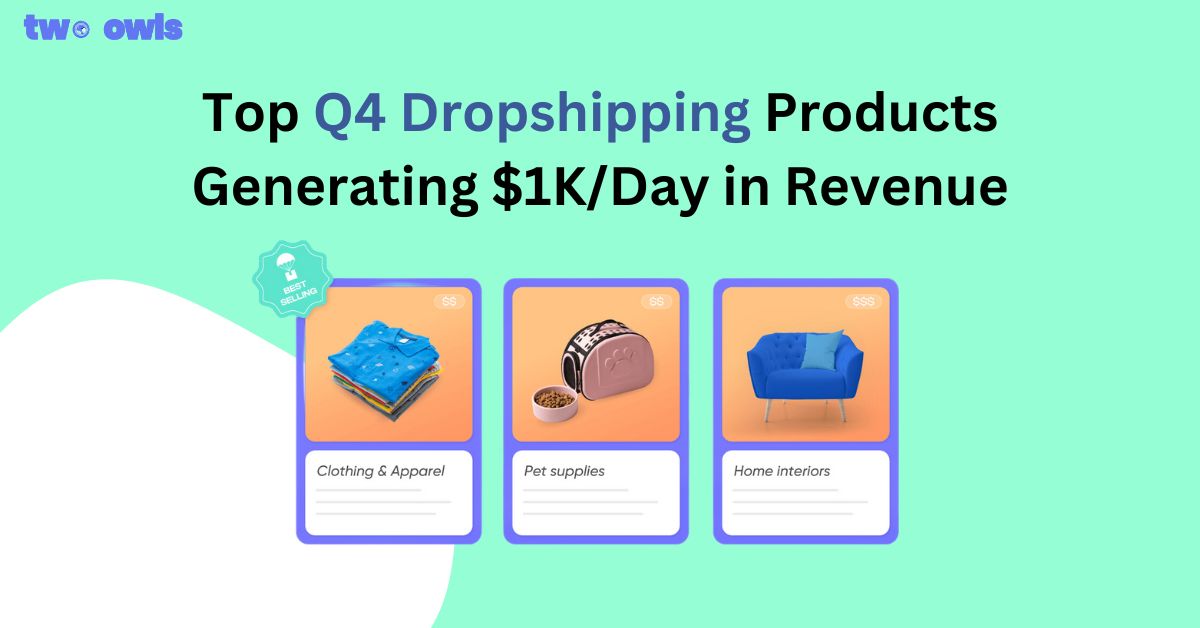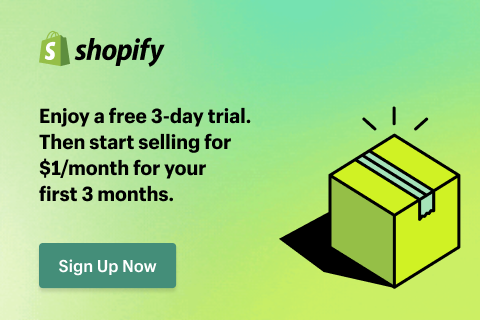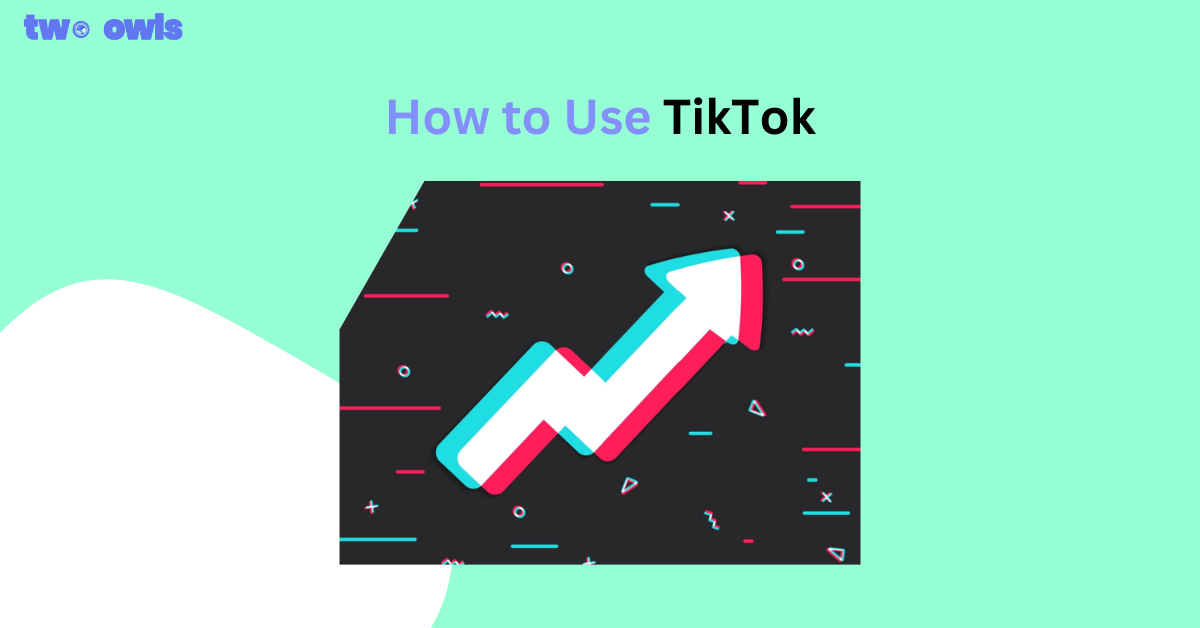ROAS in Facebook Ads: What is a Good ROAS for Facebook?
ROAS, or Return on Ad Spend, is an essential metric to monitor when advertising on Facebook. In this article, let’s discover 10 actionable tips to achieve a high ROAS on Facebook Ads. Whether you’re a seasoned marketer looking to refine your strategy or a new agency seeking best practices, this guide offers invaluable insights for optimizing your clients’ reporting and boosting ad performance.
What is ROAS in Facebook Ads?
ROAS (return on ad spend) is a marketing metric that measures the revenue your company earns for every dollar spent on advertising.
In Facebook Ads metrics, ROAS calculates the return by dividing the total revenue generated from Facebook by the total ad spend across all campaigns, without any difference in its approach.
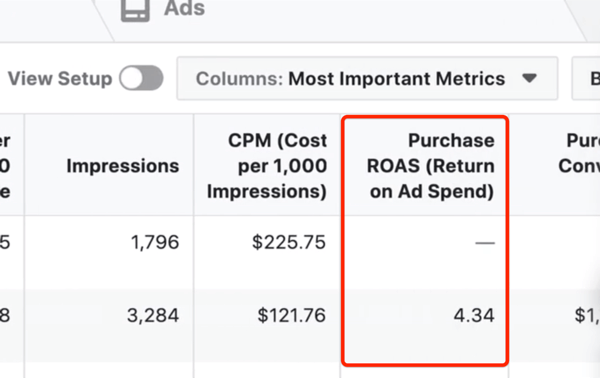
How to Calculate Facebook ROAS?
To calculate ROAS, you use the formula:
ROAS = Revenue from Ads/Total Ad Spend
For example, if you spend $100 on a Facebook ad campaign and generate $500 in revenue from it, your ROAS would be:
ROAS = 500/100 = 5
It means that this campaign is profitable. Since the ROAS (Return on Ad Spend) is 5, it means that for every dollar spent on advertising, you earn $5 in revenue.
Why is Facebook ROAS Important?
Here are 3 key reasons why Facebook ROAS (Return on Ad Spend) is crucial for your business:
Performance Measurement
ROAS is a key indicator of the effectiveness of your ad campaigns. It measures the revenue generated for every dollar spent on advertising, providing a clear picture of how well your ads are performing. A higher ROAS means you’re getting more revenue for every dollar you spend on ads. This shows that your money is being spent efficiently and your ads are performing well, helping you see the financial benefits of your advertising.
Budget Optimization
By looking at ROAS, businesses can see which ads are making the most money. This helps them spend their advertising budget more wisely by putting more money into the ads that perform best. Doing this makes their advertising more efficient and profitable.
Strategic Decision Making
ROAS provides important data that helps you make informed choices about your ad strategies. You can improve targeting, refine your ad content, and make strategic adjustments based on what the data shows, leading to more effective and efficient advertising.
What is a Good ROAS for Facebook Ads?
A “good” ROAS for Facebook Ads can vary depending on the industry, business goals, and specific campaign objectives.
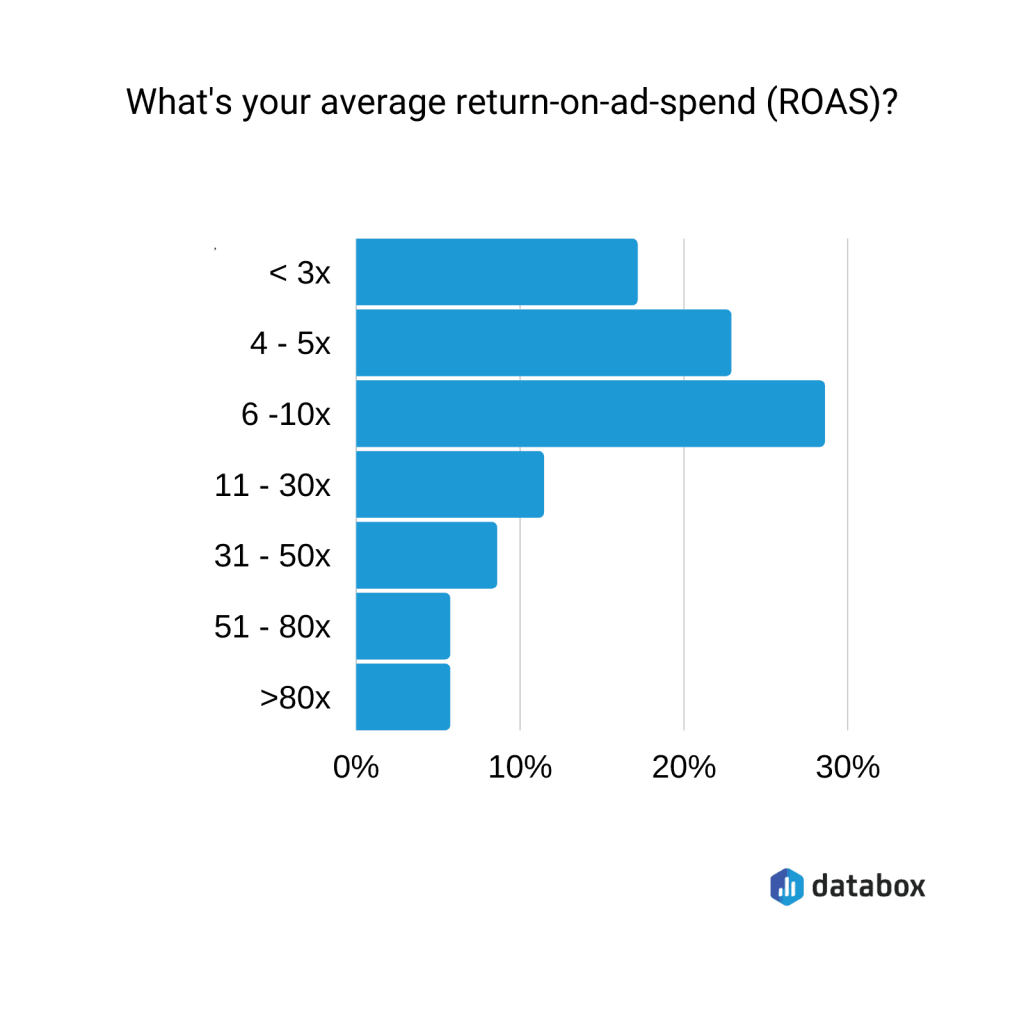
However, here are some general benchmarks and considerations to help determine what might be considered a “good” ROAS for your Facebook Ads campaigns, according to data from Intensify:
| Industry | Average ROAS |
|---|---|
| Art | 1.99 |
| Automotive | 1.78 |
| Baby | 2.62 |
| Books | 1.78 |
| Car & Truck Parts | 3.33 |
| Clothing | 2.56 |
| Collectibles | 1.9 |
| Computers | 3.28 |
| Crafts | 1.99 |
| Digital Products | 3.28 |
| Electronics | 3.28 |
| Fashion Accessories | 2.07 |
| Food & Beverages | 1.63 |
| Hair & Braids | 2.07 |
| Health & Beauty | 1.71 |
| Home & Garden | 2.25 |
| Jewelry & Watches | 2.07 |
| Office Products | 1.84 |
| Other | 1.78 |
| Pet Supplies | 1.39 |
| Shoes | 2.56 |
| Sporting & Goods | 2.56 |
| Toys & Hobbies | 1.9 |
How to Increase Facebook ROAS?
Improving your ROAS on Facebook Ads is essential for a successful advertising campaign. Navigating this platform to get the best results can seem challenging, but with the right strategies and tips, you can guide your campaigns toward success.
Here are some strategies to help you improve your ROAS, streamline your campaign performance, and enhance your client reporting. Let’s dive in.
#1 Using Lookalike Audiences
Precise targeting ensures your ads reach the most relevant audience, increasing the likelihood of conversions. Facebook offers detailed targeting options, including custom audiences, lookalike audiences, and retargeting, to focus on users with higher conversion potential.
Recommendation: Use Facebook’s Lookalike Audiences to find users similar to your best customers. Start with a custom audience of your most valuable customers, then create a lookalike audience based on that group to expand your reach effectively.
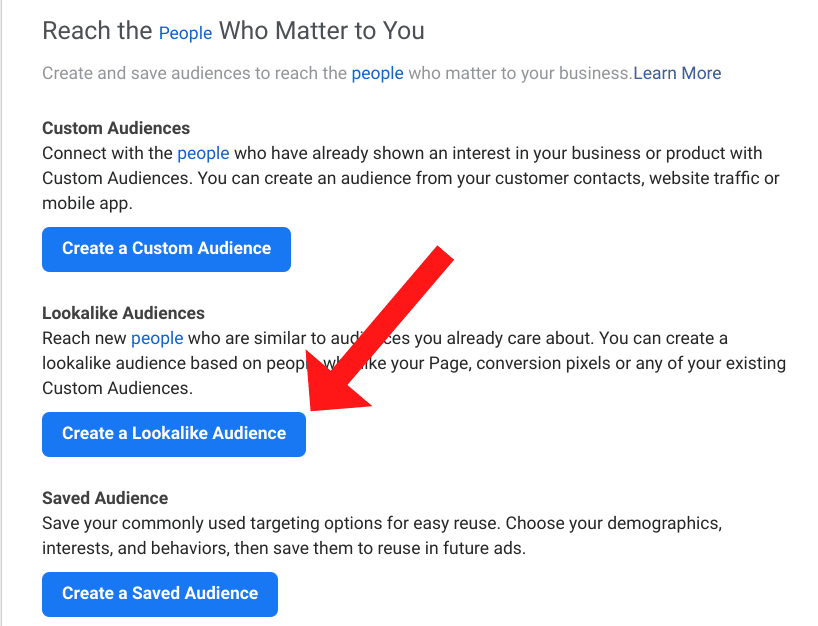
#2 Enhance Ad Creatives
High-quality visuals and compelling ad copy are crucial for capturing user attention and driving engagement. A/B testing different creatives allows you to determine which elements resonate best with your audience, leading to higher click-through and conversion rates.
Recommendation: Regularly A/B test your ad creatives by varying headlines, images, and call-to-actions. Use Facebook’s built-in split testing tools to identify which versions perform best and iterate based on the results.
#3 Optimize Landing Pages
A seamless and user-friendly landing page is essential for converting clicks into sales. Fast load times, clear messaging, and mobile optimization are key factors that influence the user experience and conversion rates.
Recommendation: Ensure your landing pages load in under 3 seconds and are fully optimized for mobile devices. Use tools like Google PageSpeed Insights to test and improve your page load times. Simplify the layout and ensure the call-to-action is prominent and clear.
#4 Use Dynamic Ads
Dynamic ads automatically showcase the most relevant products to each user based on their interests and behaviors. This personalization increases the chances of users engaging with the ad and making a purchase.
Recommendation: Set up Facebook Dynamic Ads to automatically promote your entire product catalog. Use high-quality images and ensure your product feed is up-to-date to take full advantage of personalized ad delivery.
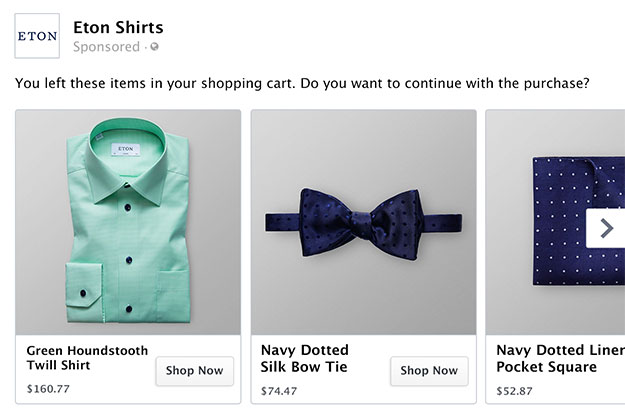
If you want to upload products for Dynamic Ads quickly and easily, consider using Omega Facebook Pixels. The app can help merchants upload their products to a catalog, enabling them to run Dynamic Ads on Facebook.
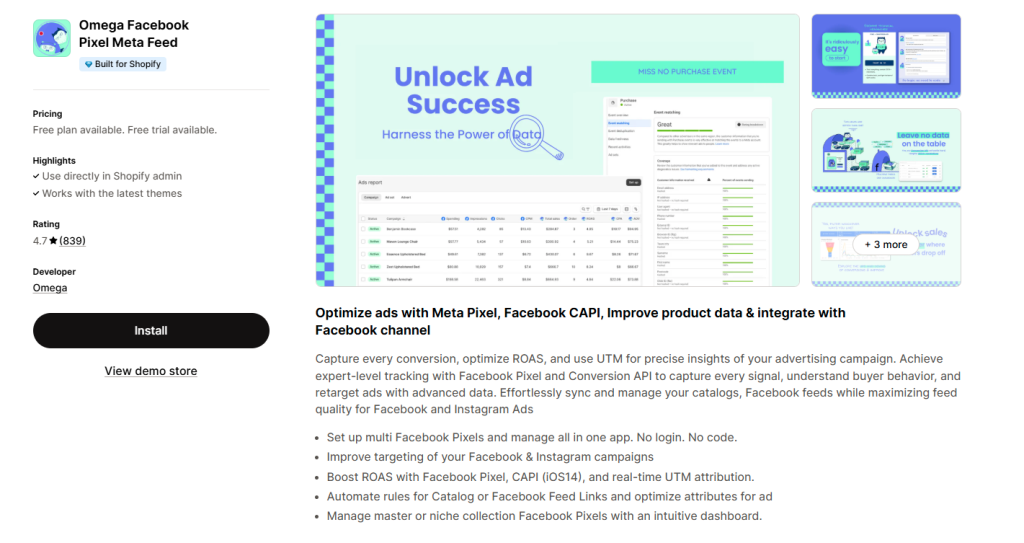
This allows businesses to automatically show the right products to people who have expressed interest on their website, in their app, or elsewhere on the internet. By using Omega Facebook Pixels, merchants can ensure that their product information is always up-to-date and accurately reflected in their dynamic ad campaigns.
#5 Leverage Facebook Pixel
The Facebook Pixel tracks user interactions on your website, providing valuable data for retargeting and optimizing ad campaigns. This tool helps you understand customer behavior and tailor your ads to increase effectiveness.
Recommendation: Install the Facebook Pixel on all pages of your website. Use the data to create custom audiences for retargeting users who have shown interest but not yet converted, such as cart abandoners.
#6 Adjust Bidding Strategies
Different bidding strategies, such as cost cap, bid cap, or target cost, can impact the cost-effectiveness of your ads. Experimenting with these strategies allows you to find the optimal approach for reaching your desired audience within budget constraints.
Start with automatic bidding to let Facebook optimize for conversions, then test manual bidding strategies like cost cap or bid cap to control your ad spend more precisely and achieve your desired cost-per-action.
#7 Focus on High-Value Customers
Identifying and targeting high-value customers who are more likely to make repeat purchases or have a higher lifetime value can boost your ROAS. These customers provide greater returns on your ad spend.
Recommendation: Analyze your customer data to segment high-value customers. Use this segment to create a custom audience and tailor your ads specifically to encourage repeat purchases or upsell complementary products.
#8 Use Video Ads
Video content is more engaging than static images and can effectively capture user attention. Creating compelling video ads can drive higher click-through and conversion rates, enhancing your overall ROAS.
Recommendation: Create short, engaging video ads that highlight the benefits of your products. Use captions for silent viewing and include a clear call-to-action. Regularly test different video lengths and formats to see what resonates best with your audience.
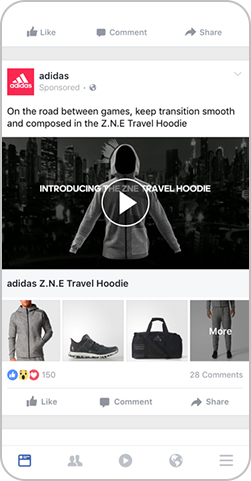
#9 Monitor and Analyze Performance
Regularly reviewing ad performance data helps identify what works and what doesn’t. Using these insights to make informed adjustments ensures your campaigns remain optimized and effective.
Recommendation: Use Facebook Ads Manager to monitor key metrics such as CTR, conversion rate, and ROAS. Set up custom reports to track performance over time and identify trends. Make data-driven adjustments to optimize your campaigns continuously.
#10 Offer Incentives
Providing discounts, promotions, or special offers can entice users to click on your ads and complete purchases. Incentives create a sense of urgency and value, driving higher conversion rates.
Recommendation: Run limited-time promotions and clearly highlight the offer in your ad copy and creative. Use urgency tactics like countdown timers on your landing pages to encourage immediate action. Track the performance of these campaigns to measure their impact on your ROAS.
Factors That Lower ROAS in Facebook Ads Facebook
Understanding the elements that can negatively impact your ROAS is crucial for optimizing your ad campaigns. Here are the main factors that can lead to a decreased ROAS:
Rising Advertising Costs
ROAS is calculated using the formula Revenue/Cost, so when advertising costs rise, ROAS decreases. To understand this increase, consider the cost formula:
Cost = CPM*Impressions/1000
Costs increase when CPM rises. Factors influencing CPM include the audience, competitive market, and ad score.
Reduced Revenue
The formula for calculating revenue is:
Revenue = Orders*AOV = Impressions*CTR*CVR*AOV
Therefore, a decrease in ROAS is linked to these 4 metrics:
- Impressions
- CTR (Click-Through Rate)
- CVR (Conversion Rate)
- AOV (Average Order Value)
Poor Targeting
Ads not reaching the right audience are less likely to convert. Poor targeting happens when there is insufficient understanding of customer demographics, interests, and behaviors.
Use Facebook’s advanced targeting features to refine your audience. Employ lookalike audiences, retargeting, and detailed demographic targeting to attract users more likely to convert.
Wrap up
Through this article, we hope you have gained a clear understanding of ROAS in Facebook Ads and its importance for creating effective and profitable campaigns. Implementing these insights will help you maximize the return on your Facebook advertising efforts.
Introducing Real-time TikTok event testing - Omega TikTok Pixels
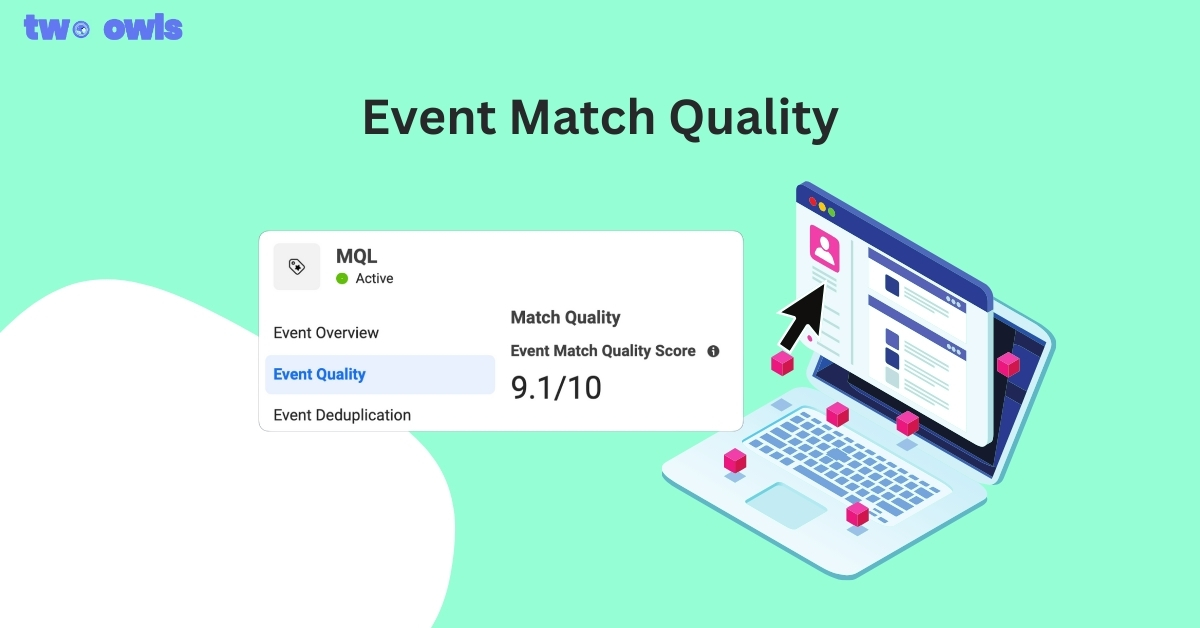
Event Match Quality: Definition, Benchmarks & How to Improve It
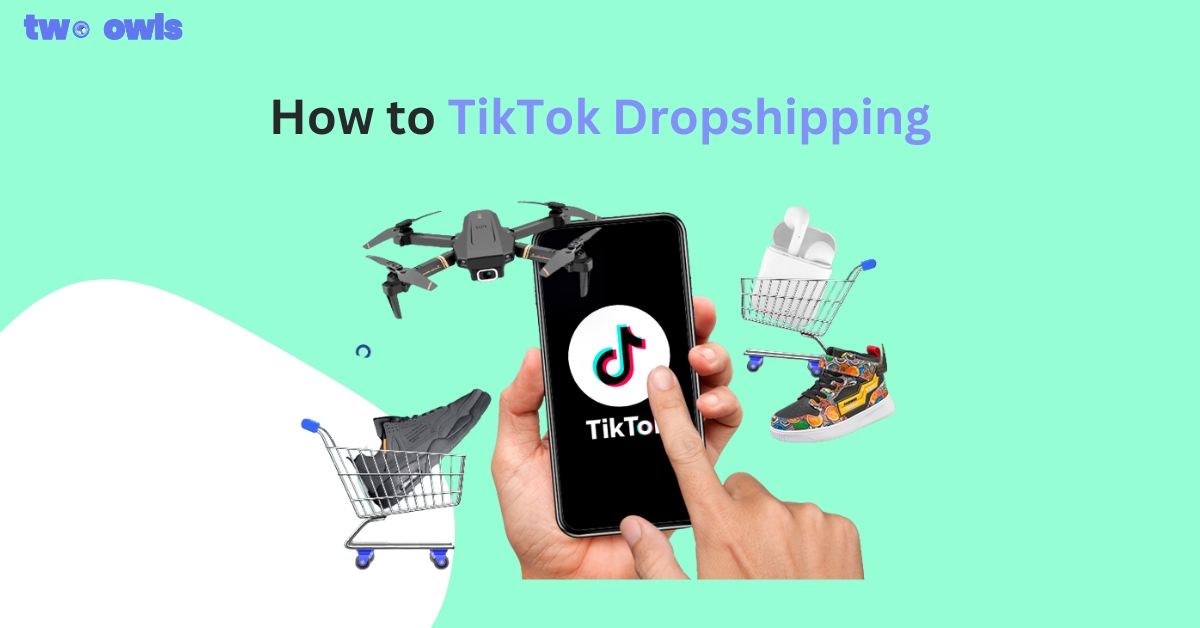
TikTok Dropshipping: How to Build a Profitable Store in 2026
